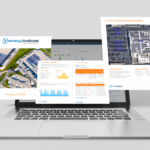There are numerous solar software solutions on the market today, which is great if you’re a solar company. But the multitude of options is making the evaluation process more difficult. When trying to determine the solution best suited for your needs, there’s several things to consider. In this blog, I’m going to highlight ten questions to ask as you evaluate different solar proposal software platforms.
- Is the product easy to learn and start using?
- Is the company responsive and can I get one-on-one support when I need assistance?
- Is the software product objective and unbiased?
- Can the software be used for only residential or commercial applications, or both?
- Is their utility rate data up-to-date?
- Can it import interval meter data (aka Green Button Data)?
- Does it integrate with other platforms and service providers?
- Can I white-label the proposal to prominently feature my company’s brand?
- How transparent is the analysis and proposal?
- Can it model complex financial transactions?
Is the product easy to learn and start using?
Good solar salespeople are always very busy. Time is one of their most precious resources. Not only must any new software product they’re considering be better than what they’re currently using, but it also must enable users to easily onboard onto the new platform and get up to speed quickly. The “switching costs” of learning a new software platform is often more expensive than the actual cost of the new software itself.
Is the company responsive and can I get one-on-one support when I need assistance?
Users inevitably will need one-on-one support (from an actual human being) from even the best software tools. It’s important to know upfront how responsive a software company will be to support inquiries. Will my team receive an account manager or an assigned point-of-contact? How long will it take for them to call me back or respond to my email? Does the onboarding process include personalized support and training? Will support services incur extra charges?
Is the software product objective and unbiased?
The software provider’s stance on objectivity is important to know upfront. If a solar company is going to infuse their brand in the proposal and attach their name to the analysis, they need to know if the final analysis is going to be unbiased. Is the software solution a third-party tool, or is it being offered by an industry vendor? Does the software platform favor certain types of technology vendors or financing over one other?
Can the software be used for only residential or commercial applications, or both?
Some solar contractors are focused exclusively on a certain market segment, like residential or C&I projects. Others go after both segments. Some software solutions are specifically geared for projects in certain markets, so it’s important to find out what specific project types the software supports. A good way to find out would be to inquire about the types of companies that currently use the software.
Is their utility rate data up-to-date?
Many utilities frequently update their rate schedules and tariffs. Choosing a software platform that keeps up-to-date with these changes is vital for creating a current, reliable analysis for your customer. It’s worthwhile to ask your software provider how current their rates are, how often they get updated, and if they can upload or import custom rate schedules.
Can it import interval meter data (aka Green Button Data)?
Being able to easily import and work with interval meter data (aka Green Button Data) is key, especially in markets with time-of-use rates or NEM version 2.0-type frameworks. Raw meter data enables developers to get the most granular view of their customer’s load profile and then generate the most comprehensive level of analysis possible. It’s worth asking which data formats the software supports and to see an actual demo of the import workflow in action.
Does it integrate with other platforms and service providers?
Some software solutions on the market today are more “end-to-end” and perform several functions, while others specialize on specific tasks. It’s important to get a high-level understanding of what other software solutions are integrated into the platform. For example, can it interoperate seamlessly with other solar production modeling tools, solar design/layout applications, or financial modeling solutions? It’s critical to think about how a software application will interact with other tools used throughout the organization, like Excel or an internal CRM or ERP.
Can I white-label the proposal to prominently feature my company’s brand?
Being able to infuse your brand’s image and messaging into a proposal can go a long way in highlighting your strengths and helping showcase why you are the best company for the job. It’s important to find out upfront how customizable you can make your proposal templates. Can you create different types of proposal templates for different types of projects? Does the software offer pre-built templates, or do you have to build them up from scratch?
How transparent is the analysis and proposal?
It’s important to be transparent when presenting ‘avoided cost’ analysis to your customer, which is the calculation of how much money a project saves in dollar terms. It’s not enough to say “trust us, this analysis is accurate”. A solar salesperson needs to be able to show exactly how the quantification of savings was performed. We encourage you to ask for a demo to see how the software platform performs savings analysis. Is it truly 100% transparent? Will the customer be able to easily understand how you arrived at your savings value?
Can it model complex financial transactions?
There are numerous ways to finance a solar project, from loans to leases to PPA’s and shared savings models. The financing company will often have a well-defined specification on how the financing payments are calculated and how they should be presented to the host customer. It is essential that any third-party proposal software can calculate and display project cash flow tables to exactly replicate the financing company’s terms. It’s also important that complex financial transactions can be distilled into a clear and simple fashion, so it’s well understood by a potential customer.



